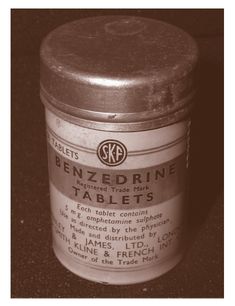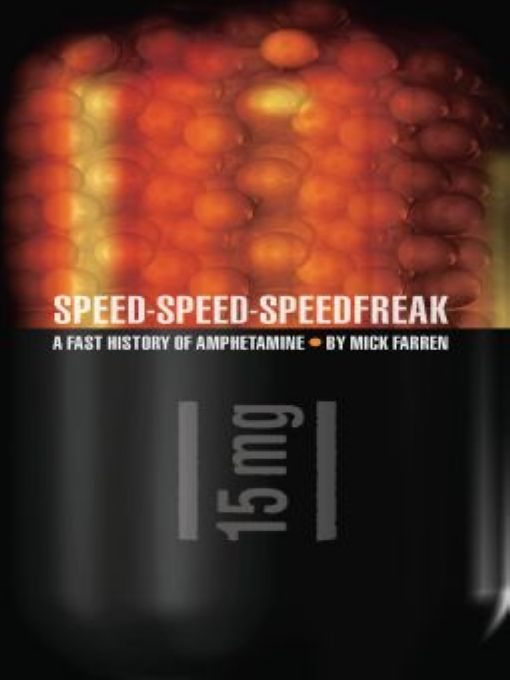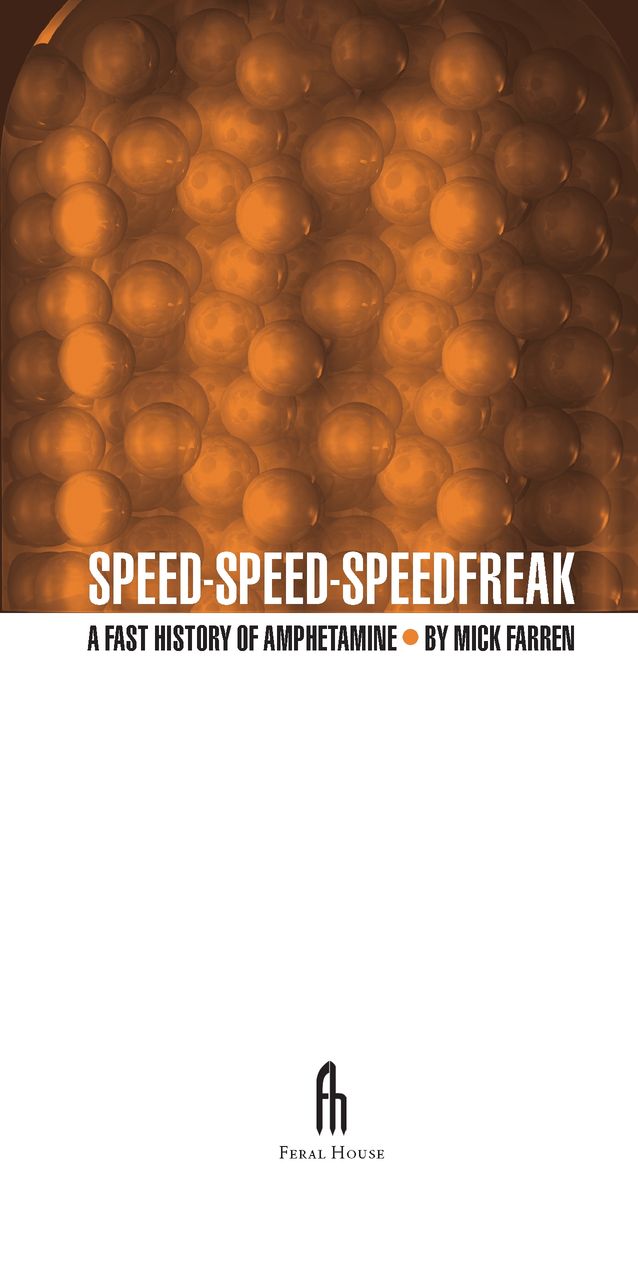Table of Contents
COME AND GET YOUR BEER AND BENZEDRINE!
FROM ON THAT GREAT COME AND GET IT DAY,FINIANS RAINBOWBY YIP HARBURG
The band had graduated from pills to glass ampoules of pure liquid methedrine. The running gag among the musicians and roadies was that the only clinical use for the stuff, aside from fueling a ramshackle rock & roll band from one performance hellhole to the next, was to revive patients who had clinically died on an operating table. We took a certain suicidally romantic pride in our advanced substance abuseit was, after all, the late 1960s. We might not play as well or be as popular as The Who, but there was a good chance we were taking quite as much speed as they were, and we figured that had to count for something. Some band members injected the drug, others, the ones with a phobic dislike of needles, simply cracked open the neck of the ampoule and poured it into a Coca-Cola or a Pepsi...
MICK FARREN ON THE DEVIANTS
CHAPTER 1
A DRUG IN SEARCH OF A FUNCTION
WHEN BASIC AMPHETAMINE WAS FIRST SYNTHESIZED in 1887 by the Romanian chemist Lazar Edeleanu, working at the University of Berlin, no one was thinking about madness, death, or any combination of the two. The hope was that this new compound would prove an easily manufactured and more efficient bronchodilator for asthmatics than the drug ephedrine, which had been isolated from the plant ma huang that same year by Nagayoshi Nagai in Japan. Edeleanu dubbed his creation phenylisopropylamine, but later switched its name to alpha-methylphenethylamine which was quickly shortened to the more pronounceable amphetamine. (As in alpha-methylphenethylamine.)
From the very start, amphetamine proved itself to be a drug in search of a function. It had proved disappointing as an asthma cure, but it showed a quite amazing range of side effects. Test subjects exhibited alertness, euphoria, heightened physical energy, and prolonged stamina. In early tests, it enhanced concentration, caused rapid and volatile verbalization, boosted confidence, and increased social responsiveness. Other effects of the drug included decreased appetite, and a noticeable enhancement of the sex drive and sexual response in both men and women. When, again in Japan, in 1919, the related but far more powerful crystallized methamphetamine was synthesized by a research team led by Akira Ogata (via reduction of ephedrine using red phosphorus and iodine), commercial uses still could not be found, but it was noted that the same powerful side effects observed with the original amphetamine were even more pronounced in this advanced variation.
At that point, the research on amphetamine was shelved, and it wasnt until 1927 that pioneer psycho-pharmacologist Gordon Alles resynthesized the drug, still seeking a substitute for the asthma cure ephedrine, but, again, it failed to fulfill its intended purpose. Although to continue research on a drug without any immediate specific therapeutic goal is common in todays pharmaceutical industry, such work was simply considered a waste of time and laboratory space in the early twentieth century. Alles had, however, discovered that amphetamine could be produced in a volatile form that lent itself to packaging as an inhaler. This attracted the attention of the corporate pharmaceutical giant Smith, Kline & French (SK&F), who decided that amphetamine could be profitably marketed as a means of relief for a whole variety of ailments. In 1932, the Benzedrine inhaler was launched in drugstores in the United States, and was both prescribed by accommodating physicians, and sold over the counter, first as a general treatment for respiratory problems, then within less than three years, for relief of more than 39 medical conditions ranging from hiccups to schizophrenia.
THE SCIENCE OF SPEED
AMPHETAMINES release stores of norepinephrine and dopamine from nerve endings by converting the respective molecular transporters into open channels. Amphetamine also releases stores of serotonin from synaptic vesicles when taken in relatively high doses. This effect is more pronounced in methamphetamine use. Amphetamines also prevent the monoamine transporters for dopamine and norepinephrine from recycling them (called reuptake inhibition), which leads to increased amounts of dopamine and norepinephrine in synaptic clefts. These combined effects rapidly increase the concentrations of the respective neurotransmitters in the synaptic cleft, which promotes nerve impulse transmission in neurons that have those receptors.
WHILE SMITH, KLINE & FRENCH AND THE MEDICAL profession were extolling the virtues of Benzedrine, a section of the ever ingenious public-at-large quickly discovered that the inhalers had an equally extensive non-medical potentialessentially the range of side effects first observed by the researchers Edeleanu and Nagaiand began to devise ingenious ways to exploit them. The abuse of Benzedrine inhalers required only minimal cunning. The inhaler was a tube about the size of a fat cigarette, a hard case containing either a paper strip or cotton ball saturated in Benzedrine. All this first generation of speedfreaks needed to do was to crack open the casing of the inhaler, and swallow the contents, rolling the paper or cotton into small balls and washing them down with coffee, a soft drink, or alcohol. In 1937, Smith, Kline & French released a pill form of Benzedrine, and bennies, as instant street slang nicknamed them, became the new recreational drug.

The use of both the pills and inhalers was rapidly adopted on all levels of society. In addition to the usual drug culture lowlifesthe zoot suiters, jazz musicians, strippers, hookers, and petty criminals who might be expected to dunk the contents of a Benzedrine inhaler in their all-night coffee, college kids resorted to them when cramming for exams, or just to party. Long-distance drivers used them to stay awake at the wheel, while factory workers on the newly introduced production lines used bennies to help them work double shifts. Whispered rumors also circulated about the use of Benzedrine as a performance enhancement in professional sports, and doubtless its radical effects on sexual stamina and creativity had also been noted. Back in the pre-Kinsey 1930s, no one wrote openly about the ins and outs of sex and sexual responses except on the level of smudged, cheapo print porn like the time-honored Tijuana Bibles in which bennies are now and then mentioned.
The bizarre paradox, however, was that Benzedrine in particular and amphetamine in general were close to being an exact chemical analogue of traditional American virtuesstamina, dedication, hard work, endurance, and the willingness to repeat mindless actions for hours on end. This fact was not ignored by capitalists and captains of industry. Far from discouraging drug use on the factory floor, a number of industrialistsHenry Ford reputedly among themstudied, at least in theory, the effects that the distribution of amphetamines to the labor force might have on the equation between manpower and productivity in manufacturing industries. A drug that would narrow the machine operators focus, and make him or her more at one with their machine had to be good for any business from the mighty General Motors to the smallest and most sweaty of garment industry sweatshops.














